The Gothic Revival came right on the heels of its opposite, the neoclassical Greek Revival—the “national style” of the new republic. Inspired by an English revival spawned by designer and writer A.W.N. Pugin and by the novels of Sir Walter Scott, the Gothic referenced unspoiled medieval architecture.
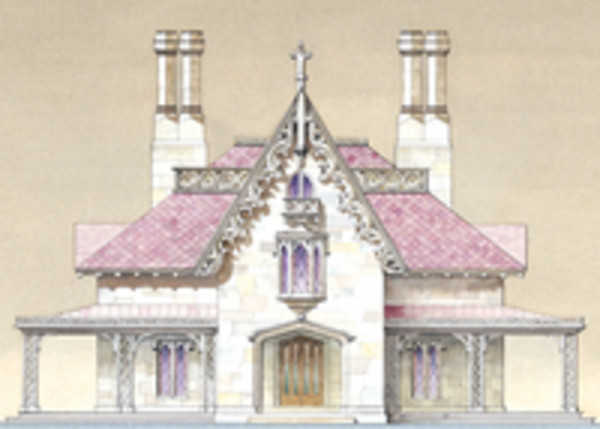
It arrived in the U.S. as early as 1799, but it became the rage in the 1840s and ‘50s. A.J. Downing had encouraged a wooden cottage-Gothic style in his books, and his friend, the architect Alexander Jackson Davis, had already built Gothic villas in stone and stucco.
Hallmarks of Gothic Revival
• Pointed arch windows and occasionally the front door
• A vergeboard or bargeboard decorating the eaves on the façade, made of sawn wooden “gingerbread”
• Gothic-era motifs like trefoils and quatrefoils, cusps, arches, and lobes
• A steep roof, often cross-gabled
• Gable ornament such as stick decoration or a finial
• Oriel windows (a bay above ground)
• Diamond panes and tracery (muntins in a pattern) in windows
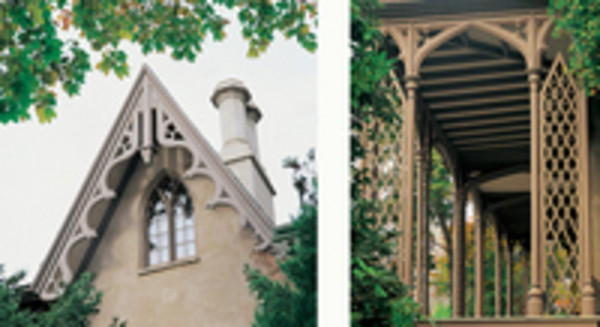
The American Gothic Interior
Fancier houses had tiled floors, carved Gothic mantels and staircases, and pointed-arch motifs in windows, French doors, and woodwork panels. Gothic motifs would generally be seen mostly in the public rooms: the stair hall, parlor, and dining room. Elsewhere, typical mid-Victorian woodwork and decorating standards applied. And only rare domestic examples are pure Gothic Revival. Your house may even combine Classical and Gothic elements.
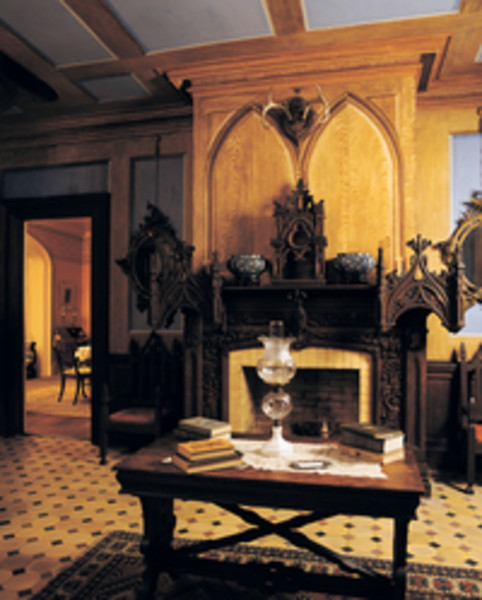
The middle class’s Gothic longings were expressed through wallpaper (rather than hand-painted polychromy), stained pine wainscots (rather than dark oak linen-fold panels), and plaster ornament (rather than vaulted ceilings). Much of the revival’s decoration was flat and abstracted. Scenics now depicted medieval instead of classical scenes. Abstract, arched, floral, and foliate designs were popular, as was the diaper: a flat, repetitive trellislike pattern consisting of squares or lozenges, often filled with stylized flower heads.
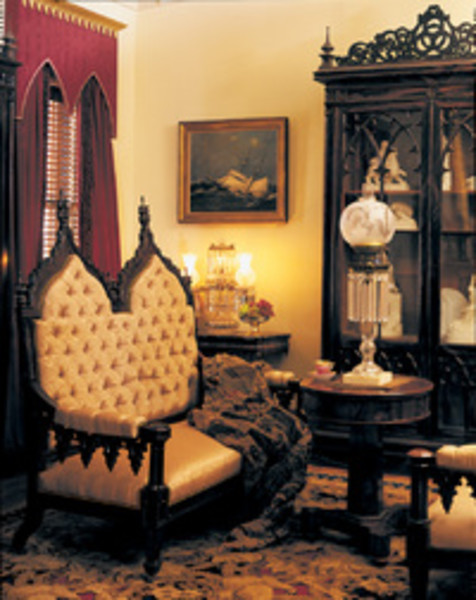
Grained wood and ebonizing were in vogue. English encaustics (colored clay inlaid into a wet terra-cotta ground, a medieval method revived by Herbert Minton) and geometric tiles were widely used in entries, halls, and around fireplaces.
Casement windows with diamond panes generally needed no further treatment. On other windows, privacy came from interior shutters or Venetian blinds. Fabric blinds were also used, perhaps painted with landscapes of castle scenes. Light curtains of muslin, combined in public rooms with worsted or silk overcurtains and lambrequins (stiff valances) or fabric fringe over the rod, were used. Revival treatments favored simplicity, with panels pulled back on plain rings
Carpenter Gothic
Many of the smaller (and most charming) examples were built by anonymous carpenter–builders in wood, not stone, in the U.S. and Canada. Carpenter Gothic was the name for a folk interpretation of Gothic designs. On these buildings (houses and often churches) you’ll find board-and-batten siding, a vernacular departure advocated by A.J. Downing. Steep roofs and fanciful vergeboards are typical.
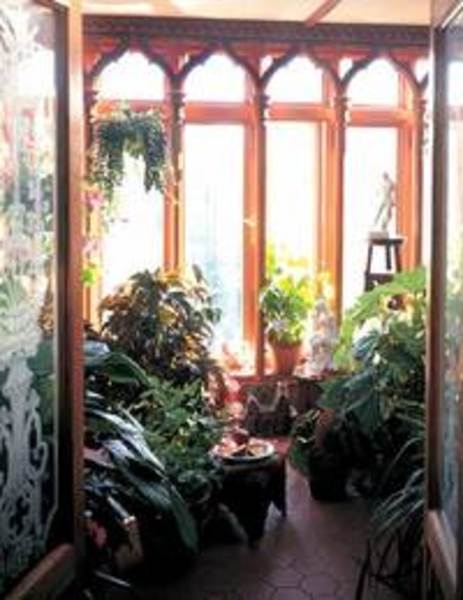
The Carpenter Gothic is related to such northern European timber-frame traditions as the Swiss Chalet, all part of the continuum toward the Stick Style in the 1870s.
Hallmarks of Carpenter Gothic
• Board-and-batten siding: vertical boards with the joints covered by narrow wood strips
• Bargeboards of sawn wood at the eaves
• Pointed arch windows
Recommended Reading
Gothic Revival
By Megan Aldrich (Phaidon Press, 1994)
The definitive work on the domestic Gothic Revival, concentrating on castles, villas, country homes, and cottages rather than ecclesiastical and civic buildings. Readable, insightful text. The book’s design and profusion of chosen illustrations do honor to the Gothic Revival.
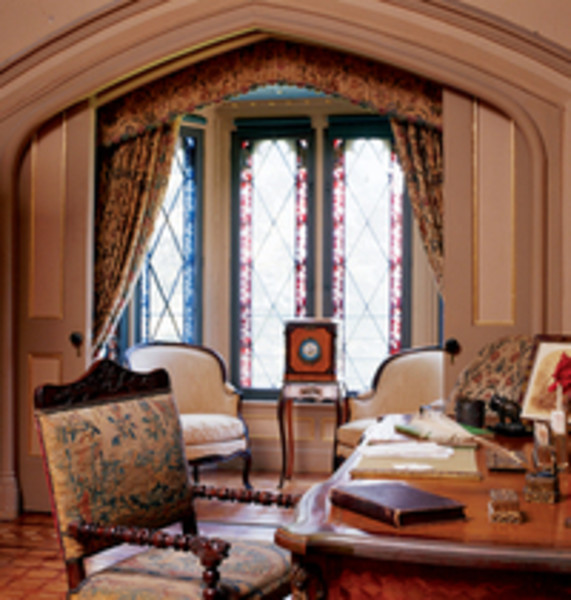
Victorian Cottage Residences
By A.J. Downing (Dover, 1981)
A firsthand source for early Victorian cottage designs, including Gothic, Bracketed (Italianate), and Rustic. Illustrations and floor plans. Reprint of the 1873 edition of the book first published in 1842.
The Architecture of Country Houses
By A. J. Downing
The landmark book is available as both a faithful reprint (Dover, 1969) and an annotated reissue (Univ. of Michigan Library, 2001).
In Pointed Style: The Gothic Revival in America, 1800–1860
By Elizabeth Feld (Hirschl & Adler Galleries, 2006)
Catalog of the paintings, lighting, furniture, and decorative objects of the period.
Pioneers of the Modern Movement
By Nikolaus Pevsner (1936)
Includes a discussion of the leading role of Gothic Revival architects in developing styles of the late 19th and early 20th centuries.







